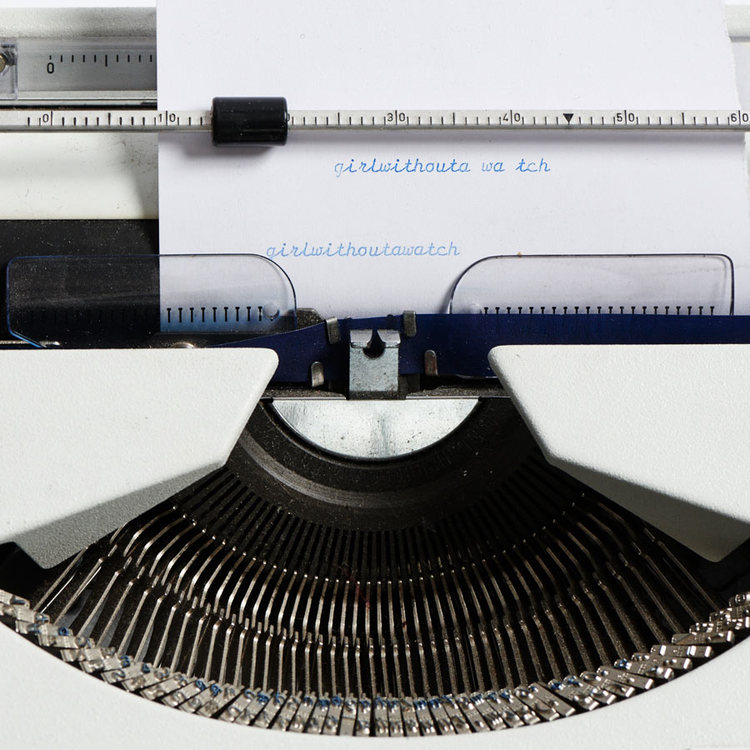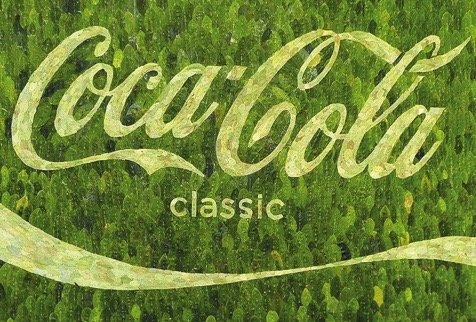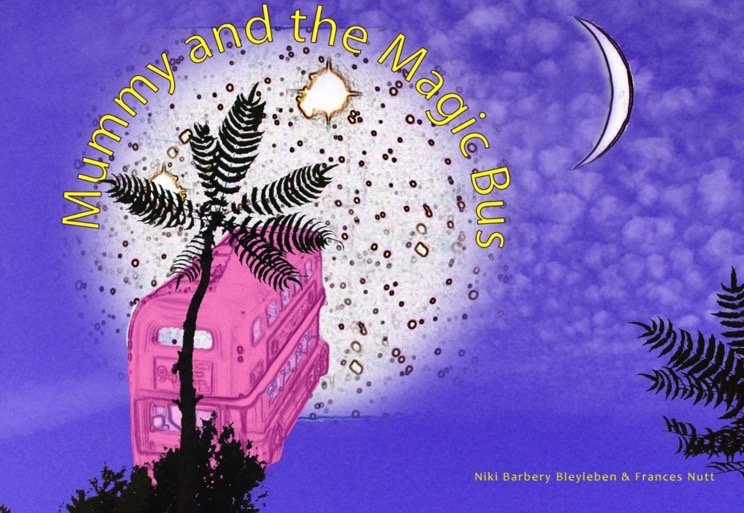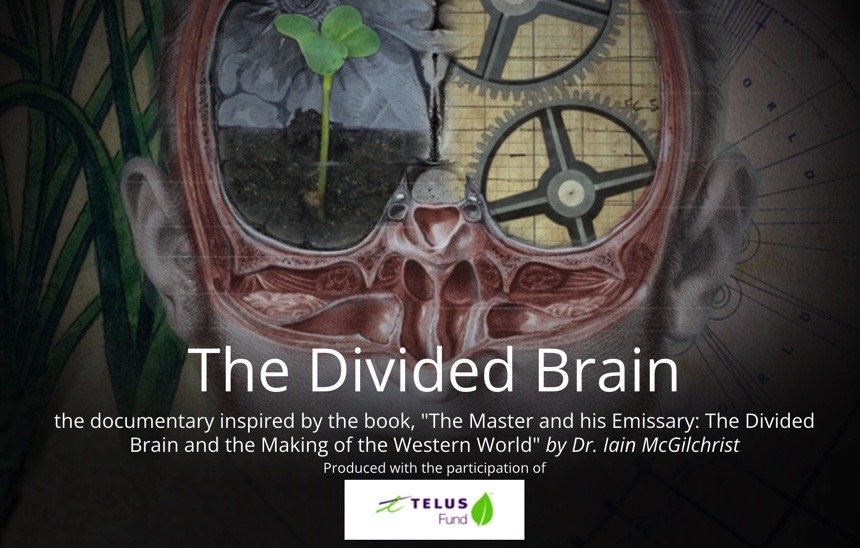I am a big fan of Nassim Taleb and have one of his quotes on my refrigerator to remind my teenagers every day to be wary of boxes:
“They are born, put in a box; they go home to live in a box; they study by ticking boxes; they go to what is called "work" in a box, where they sit in their cubicle box; they drive to the grocery store in a box to buy food in a box; they talk about thinking "outside the box"; and when they die they are put in a box.”
I fight hard to combat boxes. I’m not a big fan of straight lines either.
This is probably why I grew up doing more dancing than walking. I was a twirler—I sway, I lean, I pivot and I leap.
I am also led by love; my mind follows my heart. I first fell in love with the choreographer Pina Bausch in 1989. She, like me, was less interested in how people move, but more what moves people. Dance was my obsession for the next seven years.
Pina Bausch Foundation Archives
Although I began my 20s as a professional dancer, I ended the decade with a doctorate from the London School of Economics. It was a decade of high energy, where I consulted for the World Bank, the UN and various NGOs across five continents in areas spanning municipal finance, the provision of clean water, as well as education, environmental sustainability and inter-agency cooperation. I also worked on a river boat in the Amazon for a month setting up an eco-tourism project that is still in operation today.
In 1996, seven years after my love affair began with Pina, during the height of the brutal coca eradication initiative in Bolivia, instigated under pressure from the United States, there was news that the Bolivian artist Gastón Ugalde, had a work of art destroyed in Holland just before his exhibition. Ugalde’s piece was a huge Coca Cola sign, carefully constructed with Coca leaves. Interestingly, the same year Ai Weiwei branded a Han Dynasty jar with the Coca-Cola logo. While Ai Weiwei purposefully destroyed his work as a piece of performance art, Gaston Ugalde’s piece was accidentally destroyed by Dutch customs officials. I fell in love with both these artists. The images they conjured in my mind, the metaphors they triggered and myriad questions they raised, made my economics classes come alive. The artists provoked more visceral insight into the complexity of global consumerism than any professor had by that point.
As cycles would have it, another seven years passed and I came across the work of Oliver Williamson. His ideas challenged neoclassical assumptions around growth by asking, much like Pina; what actually moves people/consumers/the firm. He discovered (not surprisingly in retrospect) that movement depends on unique historical, cultural, religious, political and legal particularities. That these particularities ultimately influence economic variables—they become the informal and formal rules of the game that then affect a country’s ability to adopt technologies. These hidden rules or influences on behaviour are actually more obvious to anthropologists, sociologists and psychologists than to traditional economists. When I worked at the World Bank as a young 20-something, I felt so lucky just to be working there that I never questioned the mantra. The solution to alleviating poverty was so beautifully straightforward then: “stabilise, privatise, liberalise.” It was only when Oliver Williamson entered my life that I opened up to entanglement—to the human, the behavioural and cultural side of why economies move, sway and pivot the way they do. These ideas fed into my PhD research, which explored the conflict that arises in treating water as a commodity, rather than as some view it to be: a gift from God.
Beyond cultural and behavioural influences on choice, my research also explored the ways in which information asymmetry between different actors in the water sector affect outcomes in reform. These actors are referred to as Principals and Agents—Agents are meant to act on behalf of Principals; their incentives are meant to be aligned but in many circumstances complications tend to arise. This is known as the Principal-Agent Dilemma. The water sector is just one of many sectors where we can observe misalignment.
Take a public company for example. The Principals are the shareholders and they are incentivised by long-term compounded value creation. The CEO is their Agent, incentivised by short-term compensation. The problem is obvious: the CEO has big pay-outs tied to achieving certain short-term targets. She, therefore, might make short-term decisions to achieve these targets that are detrimental to the long-term value creation of the company.
Or imagine a start-up. In this case, the founder/CEO is the Principal. The salesperson is the Agent. The founder is incentivised by her ownership in the company—in its long-term growth. The salesperson is incentivised by commission checks on new contracts signed. Again, we have a potential Principal-Agent Dilemma because the salesperson is incentivised to make short-term decisions by promising the world to customers and not worrying about future customer churn.
Now imagine a country. The people are its Principals. The president is their elected Agent. The people are incentivised by the long-term improvement in their quality of life. The president is incentivised by his continuing in power. Again, we have a potential Principal-Agent Dilemma: The president has incentives to act for himself, not the people. He may be accepting money from big corporations, smearing his enemies, or invading other countries in order to consolidate his power.
I am not alone in believing that one of the ways to manage the Principal-Agent Dilemma is simply through more awareness. We need to teach this topic with as many case-studies as possible for those studying business, law and politics, as well as in economics classrooms. Our systems and institutions have to become more aware, more conscious of the disconnect between these incentives and the potential conflicts they create. We need to create space to figure out how to undo these distortions, not just through heavier regulation but through properly grasping this fundamental problem and building new systems that better align incentive structures.
Once you internalise it, you may start seeing the Principal-Agent Dilemma pop up all around you. This happened to me while writing my PhD and, to be honest, it made me a little wobbly. This is when I turned to painting. My first set of paintings are an articulation of the Principal-Agent Dilemma. Without having made these paintings, forcing myself to step away from the literal, linguistic representation of the theory, into a more embodied conceptualisation of the theory, I’m not sure I would have ever finished my thesis. Painting enabled access to another part of myself, the part of me that could see and feel the whole picture. It was a creative release, it was an extraordinary therapeutic exercise, and it provided a springboard to make the intellectual leap necessary to complete what I started.
Given Manipulation, 2007
It wasn’t until my 30s, however, that I discovered my greatest love and where my greatest intellectual whirling dervish began: Motherhood. This was a time of exploding hearts. I couldn’t believe there was love as big as this. While my baby girls were awake, my heart would alternate between states of aching, fluttering and pounding. My heart only seemed to find its rhythmic calm when I watched them sweetly sleeping in their little beds. Yet just as soon as my heart would begin to normalise, it would fill with a painful longing for tomorrow, for another wakeful day, rich with love and more heart-ache. This basic mammalian act of giving birth to life had stripped me raw; and it made me understand wholeness at its most profound level. When you feel raw you question everything. And I certainly began to question everything. The girls were mysterious and magical. They were back-breaking. And they were very expensive. Hiring someone in London to help take care of my babies would cost more than my salary as an academic.
Extraordinarily, as they grew, so too did my heart keep expanding. I fell in love with their little toddler friends as well. From the earliest of days, I found myself spell-bound, watching them interact with their environment—observing their eyes wide with awe and wonder. Sitting in the sandbox—even before they could walk—these little ones were constructing new worlds. They were each so unique, so original. They hadn’t learned to adapt to society quite yet, to copy, to fit in. I found them so provocative that at night, after tucking everyone in (including my husband), I would sneak down into my office to write down the lessons I had learned that day from them. All the children I met during those primary years seemed to be asking the questions us grownups had stopped asking. They seemed to return us to Plato. Unprompted, they had the power to take us all into a blooming space of philosophical inquiry. Why mummy? Why? But Why?
These encounters with children provided me with hope that an ecological systemic shift was possible. I wrote a little children’s book about my journey into motherhood. It’s called, Mummy and the Magic Bus (currently out of stock).
And so I decided to take a break from the traditional academic track and began hosting salon-style events and supper clubs where mothers had the space to tap into their own inner-philosopher. I did this for five years, in cities across Europe, the US and South America. The thousands of women who participated in these events were known as Hermanas Dasein—a sisterhood concept celebrating the value of uncovering philosophical meaning and building awareness, of consciously being in our every-day-ness. I also spent a bit of time working at The School of Life in London. These experiences convinced me that the dawn of a new period of enlightenment was upon us—it would be led by a feminine/maternal force with values rooted in a sustainable, regenerative system. The viewpoints from these gatherings are featured in a book that I’ve been trying to complete for years – hoping to have it finished before my children become mothers too.
In 2010, seven years after my love affair with Oliver Williamson, I began reading the work of Iain McGilchrist. In his landmark book, the Master and His Emissary, McGilchrist argues that the existence of two hemispheres in our brain has been essential to our success as a species, but is now also proving dangerous to our continued survival. He suggests that Western culture has dangerously oscillated towards a left-hemispheric engagement with the world—where an emphasis on order, control, rationality, manipulation, agency and bureaucracy, has come at the expense of empathy, freedom, flexibility, sustainability and openness across our societies. He shows us how the right hemisphere is capable of comprehending the whole whilst the left is only capable of apprehending the world in its constituent pieces. He argues that the dominance of the reductive, mechanistic left hemisphere has reshaped the world in a way that is devastating for humans, the planet and everything that lives on it. His book drove a knife through my heart. It also reminded me of the Principal-Agent Dilemma: the right hemisphere of our brain being the Principal (or Master) and the left, the Agent (or Emissary). It was a reminder of the Nietzsche parable where the emissary eventually betrays his master. This neurological asymmetry seemed analogous to the information asymmetry issues I found to be embedded in our economic frameworks and entrenched in our political systems. I agreed with McGilchrist that our society was operating as if it had brain damage—we had become a society that has lost its sense of service to the whole. A society that was losing its sense of humour, imagination, emotion and capacity for metaphor.
Bicameral Mind, 2010
McGilchrist and I have since become good friends. One thing he said to me on our first encounter—something he chose not to focus on in his book—was that the female brain was less asymmetrical than the male brain. Aha! I thought to myself. If the truly great scientific shifts we’ve witnessed throughout history were born out of a more harmonious relationship within our psyche, one in which intuition, insight, inspiration and creativity worked in partnership with contributions offered by the left hemisphere (like logic, analysis and clarity), there was hope for us yet! We just have to get that balance back. The feminine spirit (which obviously exists in men too) would lead the charge. Because McGilchrist’s 600-page book takes time to read, I decided to co-produce a documentary called The Divided Brain in 2018. As in most cases, the book is better, but the film hopefully helps get the conversation around his ideas circulating faster. I’ve also gone on to fund a series of curated discussions and podcasts to make his work as accessible to the public as possible.
Film was directed by Manfred Becker and Vanessa Dylan at Matter of Fact Media. For information at: https://channelmcgilchrist.com/home/
When my daughters were in primary school, a cosmologist friend of mine and I decided to design some conceptual maths classes with the children. The purpose was to get kids thinking about the purpose of maths—numbers as language, as a way of seeing and also of imagining what we do not yet know for sure. One of our lessons was on topology. We asked children to imagine the shape of the universe and what might cause the universe to move, to expand. While we chatted things over, we snacked on hyperbolic shapes, like Pringles, as well as pancakes and doughnuts. We were hopeful that by eating these shapes, they would lock them into their memories. We also covered their faces with sparkles (stardust) and taught them a little song—we’re as old as the universe, did you know this is true? We are all one, we are all one, feel the beat of the universe drum!
Doughnuts are a pretty great shape. I’m not sure if they are the shape of our universe but they might just be a perfect shape to help us consider a new way of thinking about our relationship with Planet Earth. Enter Kate Raworth. Anyone capable of designing an economic conceptual framework and branding it a doughnut is a genius. And yes, I have fallen in love again, seven years after my first encounter with Iain McGilchrist. Raworth’s doughnut aims to serve as a point of reflection as we consider our social boundaries, basic human needs and our planetary boundaries or ecological ceiling. Her doughnut serves as a symbol, a circular metaphor of wholeness, underpinned by equity principles—and by the notion that our economy is dependent on a shared commons. The doughnut offers a roadmap of indicators that define humanity’s “safe operating space”—one in which social fragmentation does not undermine well-being or social peace and where nature’s ecological foundations are not just safely guarded, but also regenerated and sustained over time.
Visually, I like the fact that a doughnut contains no boxes. It does not connect straight lines or point arrows wildly. Raworth’s artistic representation of the world we inhabit advocates for regenerative economic thinking but skilfully asks policy makers to adopt doughnut principles to their local realities—to effectively design their own doughnut recipes. And we all know doughnuts should come in a variety of flavours. As we witness our human species on a vulnerable trajectory, it is not enough to ask ourselves to be sustainable. First, we must do some mending, we must regenerate, we must find ways of healing to comprehend the challenges ahead with compassion and innovation. We need a new economic ethos, one that embodies a sense of service – service to wholeness. I believe that tapping into our right-hemisphere, incentivising right-hemispheric thinking, will help to realign our relationship within ourselves and the world we inhabit. I believe Raworth’s doughnut can be a tool to help us build new systems.
Wayne Thiebaud’s Three Doughnuts. See more on Raworth’s doughnut here: https://www.kateraworth.com/doughnut/
To this end, my own small contribution is running interdisciplinary workshops at schools, universities and corporations. Each workshop is uniquely designed to use an abstract art exercise to serve as a medium for discussion. Participants are asked to embody their creative spirit as they reflect upon strategies that address the ecological and socio-economic challenges ahead of us. This is a practice of nudging people to transcend their self-imposed expectations in order to reconnect with a state of vulnerability and innocence—the only place from which the surprising becomes inevitable. Because innovation is personal, it involves letting go of the ego, it involves asking questions, listening, engaging and being open.
Each workshop is under-pinned philosophically by the great loves I’ve mentioned thus far, but there are many other extraordinary visionaries whose ideas I also pull from in the design of the workshops. The idea is to bring eager changer-makers together to collectively tap into their right-hemispheres. Most participants aren’t accustomed to speaking in metaphor, they don’t usually have an opportunity to work collaboratively on a joint project, and they aren’t accustomed to being allowed to make mistakes. They tend to be uneasy about randomly dropping paint onto a huge blank canvas. The idea of working on a piece of collective art is even more daunting. Collective art-making is a lesson in non-verbal negotiation. It is a lesson in fluidity, in layering, building depth, exchanging light, colour and placement. When you create a shared vision of beauty, you have to learn to find humility, let go and to forgive mistakes in order to re-build, reassign form and structure. As an image begins to emerge upon a canvas, participants are forced to observe their own influences; they will identify where and how their own brush strokes collide with those of others, and they will observe how dominant or passive they might have been in constructing a shared vision. It is a process of building awareness through collectively constructed symbols that serve to enhance mutual understanding.
No Straight Lines is a company that I founded as a vehicle together with like-minded partners for the purposes of co-creation. The company has three main areas of focus: (i) delivery of integrative and interdisciplinary consulting solutions & educational events curation in the arts & philosophy; (ii) ecological re-generation and conservation; and (iii) film production. I also set up a small foundation with my husband and close friend, Catherine McSweeney called Inspiration Incubator, which is all about supporting projects at the seed stage. From forest conservation in Bolivia and Central African Republic, Artist-in-Residence exchange programs out of Mafalala in Mozambique, to mental well-being programs such as Fathom Trust and Citygirl In Nature. I am passionate about planting seeds—about taking things from zero to one, going from nothing to something.
I am currently a member of the Society for the Advancement of Behavioral Economics, the American Sociological Association and the Society for Neuroeconomics. I am also a fellow of the Aspen Institute Spain.








